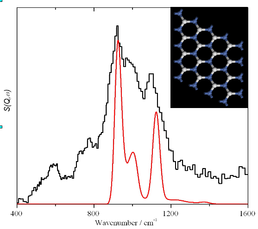Seminar 13th April 2012 4 p.m. 27:2001
First-principles vibrational spectroscopy and lattice dynamics of materials in the solid state
Dr Keith Refson
Computational Materials Science Group, Rutherford Appleton Laboratory
- Categories
- Bioinformatics, Biomathematics, CASTEP, Complex Systems, Computer Science, CVS, Emacs, FFT, Finite differences, Fortran, Gaussian, HECToR, HPCx, Iridis, Linux, Materials, Metals, Micromagnetics, Molecular Dynamics, Molecular Mechanics, Monte Carlo, Multi-physics, Multi-scale, Multigrid solvers, Multipole methods, NWCHEM, Oceanography, Onetep, ParaView, Povray, Quantum Chemistry, Semiconductors, Software Engineering
- Submitter
- Chris-Kriton Skylaris
Abstract
Vibrational spectroscopy using light or neutron scattering is a powerful probe of the dynamics and structure of materials, but limited by difficulties of assignment and interpretation. Well-known periodic DFT methods using a plane-wave basis set and pseudopotentials have been extended and combined with lattice dynamics to enable modelling of a wide range of spectroscopy experiments. By completing the missing link between structure and properties, first-principles modelling has become essential to the interpretation of IR, Raman, and inelastic neutron and X-Ray experiments.
I will outline the current state of lattice dynamical and spectroscopy modelling in periodic density functional theory, and highlight some future developments. I will discuss several applications to hydrogen transport in light-metal alloys, in-situ INS studies of Raney Ni catalysts, solid state phase transitions in C60.
A new application of first-principles lattice dynamics is the modelling of thermal diffuse scattering as measured in X-Ray and neutron diffraction experiments. Contributions to scattering at non-Bragg momentum transfer arising from thermal phonons are modelled using first principles DFT. This allows for the first time a complete picture of the results of X-Ray and neutron diffraction experiments using modern area detectors.
